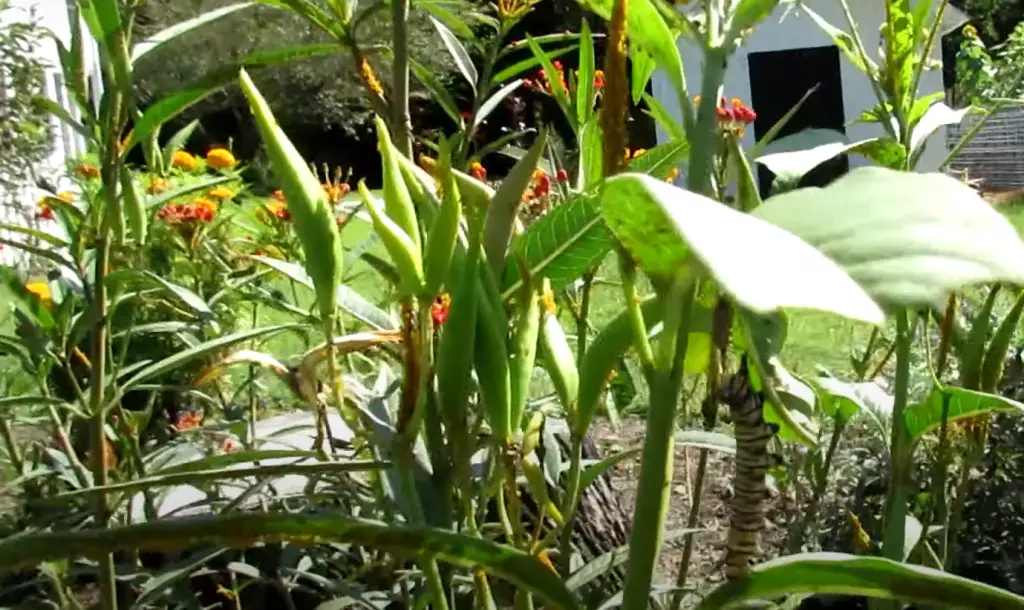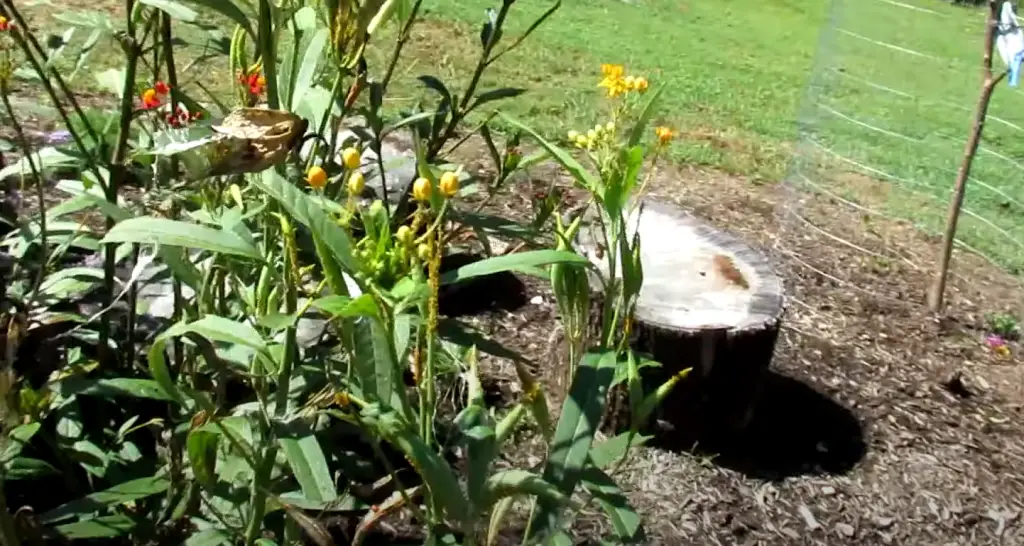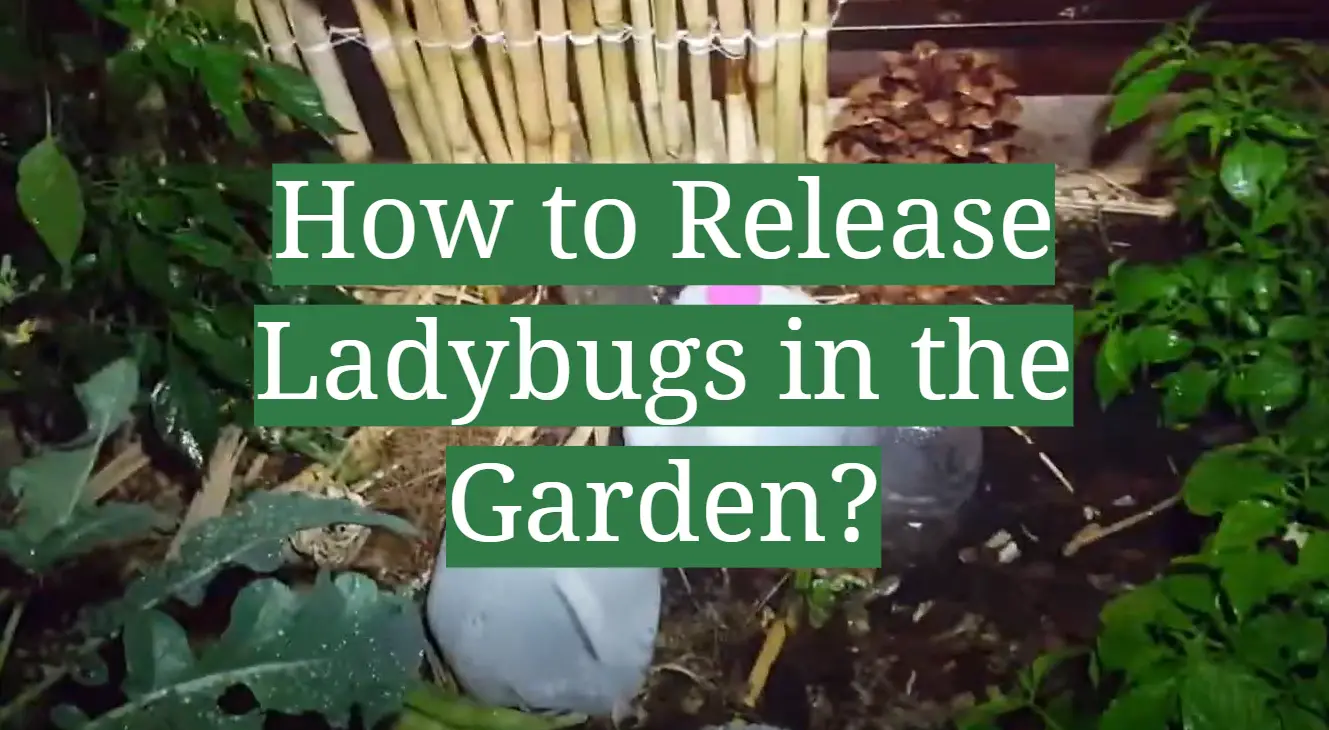Ladybugs are some of the most beloved insects in North America. Gardeners and homeowners alike appreciate their beauty and their ability to help control pests. If you have ever wondered how to release ladybugs into your garden, you have come to the right place! In this article, we will answer some common questions about ladybug releases and provide helpful tips on how to do it properly.
When To Release Ladybugs
The best time to release ladybugs into your garden is in the spring, just as the weather is starting to warm up. Ladybugs overwinter in a state of semi-hibernation, so they will be sluggish and may not survive if released too early in the season. If you live in an area with a mild climate, you can release ladybugs as early as March. In cooler areas, it is best to wait until April or May.

Another important consideration is what pests you are trying to control. If you are dealing with aphids or other soft-bodied insects, releasing ladybugs early in the season will give them a chance to build up their population before these pests become active. However, if you are trying to control beetles or other hard-bodied insects, it is best to wait until they are active before releasing the ladybugs. This will give the ladybugs a better chance of finding and eating their prey.[1]
How To Keep Ladybugs In Your Garden After Release
If you follow the tips above, you should have no problem keeping ladybugs in your garden after release. However, if you find that they are leaving, there are a few things you can do to encourage them to stay. One is to provide them with food sources such as aphids and other small insects. Another is to make sure that your garden has plenty of shelter for them to hide in from predators or harsh weather conditions. Lastly, keep an eye on the temperature; ladybugs prefer warm climates and will leave if it gets too cold.[1]
With a little patience and effort, you can successfully keep ladybugs in your garden and enjoy all the benefits they have to offer!
How Long Can You Keep Ladybugs In The Fridge?
You can keep ladybugs in the fridge for up to two weeks. After that, they will start to die off. If you are planning on releasing them into your garden, do so within a week of buying them.
If you’re not ready to release them yet, make sure to provide them with food and water. A cotton ball soaked in sugar water is a good option. You can also purchase special ladybug food from a gardening store.

Once you’re ready to release them, do so early in the morning or late in the evening when it’s cooler outside. Ladybugs are attracted to light, so releasing them during the day may cause them to fly away before they have a chance to explore your garden.[1]
Is there food in the landscape for ladybugs?
If you live in an agricultural area, chances are that there are fields nearby where farmers grow alfalfa, clover, and other crops. These crops attract aphids and other pests that ladybugs love to eat. You can find out when these crops will be harvested by contacting your local agricultural extension office. If there are no crops nearby, don’t worry! Ladybugs will also eat nectar and pollen from flowers. Planting a variety of native wildflowers in your garden will provide food for ladybugs as well as other beneficial insects like bees and butterflies.
Aphids aren’t the only pests that ladybugs eat. Ladybugs will also eat mites, whiteflies, and other small soft-bodied insects. In fact, an adult ladybug can eat up to 50 aphids per day! That’s a lot of pest control for such a tiny insect.[2]
What time of day should you release ladybugs?
The best time to release ladybugs is in the evening, after the sun has gone down. This gives them time to adjust to their new surroundings and get acclimated before they start searching for food.
If you release them during the day, there’s a chance they will fly away in search of food instead of staying put in your garden. So if you want to make sure they stick around, it’s best to let them loose at night.
Another thing to keep in mind is that ladybugs are attracted to light. So if you release them near a porch light or other source of light, they may be drawn to it and fly towards it instead of staying in your garden.[2]
What temperature should it be when you release them?
The temperature should be above 50 degrees Fahrenheit when you release ladybugs into your garden. If it’s too cold, they won’t be able to fly and will just crawl around looking for a warm place to hide.
If the temperature is too hot, on the other hand, they may become dormant and not start searching for food until it cools down again. So somewhere in the middle is best.
Where to Source Ladybugs
There are a few options for where to source ladybugs. You can purchase them online, at a nursery, or even collect them from your own backyard!
If you purchase them online, make sure to do so from a reputable dealer. This will ensure that the ladybugs you receive are healthy and ready to be released into your garden.
At a nursery, you can often find ladybugs in the springtime when they are most active. Be sure to ask the staff if they have any recommendations on where to release them in your garden.

You can also collect ladybugs from your own backyard! To do this, simply place a piece of cardboard or paper under a bush or tree where you see them congregating.[3]
What to do When Your Ladybugs Arrive
If you’ve ordered ladybugs online or through a gardening center, they will likely come in a mesh bag or cardboard box. Once you have them, it’s best to release them as soon as possible. Here are a few things to keep in mind when you’re ready to let your ladybugs loose:
- Choose a time when the temperature is above 55 degrees Fahrenheit. Ladybugs are cold-blooded creatures and won’t be able to fly if it’s too cold out.
- Avoid releasing them during windy conditions. The wind will make it difficult for the ladybugs to find their way to your garden plants.
- If possible, release them near some of their favorite food sources, like aphids or other small insects. This will give them a head start in finding something to eat.[3]
Prep Your Garden for New Visitors
Water
Water the garden well a day or two before releasing the ladybugs. This will give them something to drink and help them get acclimated to their new surroundings.
If you have plants that are infested with aphids, scale, or other pests, it’s best to remove these before releasing ladybugs. The little critters are drawn to places with lots of prey, so if there aren’t any insects for them to eat, they may just fly away in search of a more bountiful buffet.
You can also release Ladybugs near dusk when it’s starting to get dark out. They’re less likely to fly away if it’s dark and they’ll have plenty of time to explore their new home and find something to eat.[4]
Dark
Darkness is the time when aphids and other pests are most active, so releasing ladybugs at night gives them a chance to get a jump on their prey.
Once they’re released, give them some time to adjust to their new surroundings before spraying any pesticides or herbicides in the area.If you have kids, they’ll probably want to help release the ladybugs into the garden. Just be sure to supervise closely and teach them how to handle the bugs gently. Ladybugs are delicate creatures and can be easily injured if handled roughly.

Releasing ladybugs into your garden is a great way to naturally control pests. With a little knowledge and preparation, you can ensure that your ladybug release is successful. And your kids will have a blast helping out!
Ants
One of the most common questions we get asked is whether or not ladybugs will eat ants. The answer is yes!
This includes aphids, caterpillars, whiteflies, and yes, even ants.So if you’re dealing with an ant problem in your garden, releasing ladybugs could be a great solution. Just be warned that they might not stick around forever – once the ant population has been sufficiently reduced, the ladybugs will likely move on in search of other prey.[3]
The Benefits of Ladybugs in the Garden
There are many reasons why you might want to release ladybugs in the garden. For one, they are voracious predators of garden pests like aphids, whiteflies, and other small insects that can damage your plants.
Not only do they help control pests, but ladybugs also pollinate flowers as they feed on nectar and pollen. This makes them valuable allies in the fight against both pests and poor pollination.[5]
FAQ
Where is the best place to release ladybugs?
The best place to release ladybugs is in your garden, close to where you’ve seen aphids or other pests. Ladybugs will often stay close to where they’re released, so releasing them near the problem area gives them the best chance of finding food.
If you don’t have a garden, or if you want to release ladybugs away from your home, any green space will do. Parks and nature reserves are good options. Just be sure not to release them into an area that has been treated with pesticides – ladybugs are very sensitive to chemicals and won’t survive long in those conditions.
Should I release ladybugs?
If you’re interested in using ladybugs as a natural form of pest control in your garden, the answer is probably yes! Ladybugs are voracious predators of aphids and other small soft-bodied insects, making them a valuable addition to any organic gardening arsenal.
There are a few things to keep in mind before releasing ladybugs into your garden, however. First, make sure that there is an adequate food source for the ladybugs – if there aren’t enough pests for them to eat, they may simply fly away in search of greener pastures. Second, be aware that released ladybugs may not stay put; while most will remain close to where they were released, some may wander off in search of new territory.
What do you feed ladybugs?
Most ladybugs are generalists and will eat a wide variety of soft-bodied pests, including:
- Aphids
- Mealybugs
- Scale insects
- Whiteflies
However, there are a few specialist ladybug species that only eat specific types of prey. For example, the multicolored Asian lady beetle feeds primarily on aphids and scale insects, while the twice-stabbed lady beetle specializes in eating mealybugs.
You can purchase ladybugs from many online retailers or local garden centers. Be sure to buy from a reputable source to ensure you’re getting quality bugs that are well-suited for your area.
How often do you release ladybugs in the garden?
It’s best to release ladybugs in the garden every two weeks. This will give them time to eat all the aphids in your garden and then move on to another area.
If you have a really bad infestation of aphids, you can release them once a week. Just make sure to check your plants regularly and release more ladybugs if needed.
What is the lifespan of a ladybug?
The lifespan of a ladybug depends on the species, but most only live for about one year. The Asian multicolored lady beetle, however, can live up to three years.
During the warmer months, ladybugs are actively feeding and reproducing. Once winter arrives, they will find a suitable place to overwinter (hibernate) until spring when they will emerge and begin the cycle again.
Can you feed ladybugs sugar water?
Yes, you can feed ladybugs sugar water! Just mix together equal parts sugar and water, and put it in a shallow dish. The ladybugs will drink from the dish and fly away when they’re full.
If you’re worried about attracting ants, try adding a drop of dish soap to the sugar water. This will break the surface tension of the liquid, so the ants won’t be able to walk across it.
Can ladybugs bite?
No, ladybugs cannot bite. They do not have the mouthparts necessary for biting. However, some species of ladybugs can emit a foul-smelling liquid from their leg joints as a defense mechanism. This liquid can cause skin irritation in some people. If you are concerned about this possibility, you can wear gloves when handling ladybugs.
Useful Video: How to Release Lady Bugs in the Garden and Keep Them There – Releasing 1500 Ladybirds
Conclusion
Releasing ladybugs into your garden is a great way to naturally control pests. Keep in mind that ladybugs only eat aphids and other soft-bodied insects, so they won’t be able to help with problems like grubs or caterpillars. Be sure to release them in the early evening when it’s cooler out, and make sure there are plenty of plants for them to munch on. With a little patience, you’ll soon have a thriving garden full of these helpful little critters!
Do you have any tips for releasing ladybugs into the garden? We’d love to hear from you in the comments below!
References:
- https://getbusygardening.com/how-to-release-ladybugs/
- https://www.gardenstylesanantonio.com/garden-tips-blog/five-things-need-know-releasing-ladybugs-landscape/
- https://www.ruralsprout.com/release-ladybugs/
- https://www.finegardening.com/article/releasing-ladybugs-into-the-garden
- https://stacyling.com/how-to-release-ladybugs/










Leave a Reply
View Comments